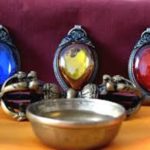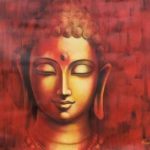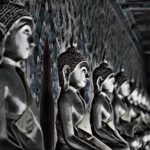Recent Comments
- Scott on Aloneness
- Chodpa on The Place where the Primordial Speaks
- Chodpa on The Cuckoo of Presence
- Afzar on Bodhidharma’s teacher, Prajnatara
- Vajragoni on Audiobook is released
-
Recent Posts
Categories
- A Darkness Visible
- A Docetic Assessment
- A Mystical Odyssey through the Sagathakam
- AI Creations
- Akṣayamatinirdeśasūtra
- Akṣhobhya’s Pure Land
- Ālaya-vijñāna
- Anūnatvāpūrṇatvanirdeśaparivarta
- Ariyapariyesanā Sutta
- Ascending the Noble Mountain of Primordial Perfection
- Asceticism
- Ashtavakra Gita in Light of the Unborn
- Audiobook
- Bankei Zen
- Beyond the Ascent
- Beyond the Rainbow Body
- Black Dragon Eye Mandala
- Bodhicitta
- Buddhadharma
- Buddhism’s Black Holes
- Buddhist Anecdotes
- Buddhist Hells
- Buddhist Meditations on the Tarot
- Chuang-Tzu
- Contemporary Musings
- Ḍākiṇī
- Dāsbodh
- Dharmakaya Abbey
- Dharmakaya Stick
- Divine Revelation
- Doctrine of the Void
- Dust Contemplation
- Ekacitta: Advanced Studies in Dark Zen
- Entry into the Dharmadhātu
- Eremitical Dhyani Meditations
- Exploring the Book of Revelation
- Gnostikos
- Hsin Hsin Ming
- Journey to the Center of the Mind
- Karma and Rebirth
- Korean Sŏn
- Kulayarāja Tantra—The Motherly Buddha
- Little Office of Our Lady of the Void
- LSD and Psychedelic Buddhism
- Māṇḍukya Kārikā
- Mañjuśrī Teaches Prajñāpāramitā
- Māra and Satan
- Meister Eckhart
- Mud and Water: Bassui Zen
- Mystagogia
- Nirvana
- Notes from the Iron Stupa
- Nothingness in Nāgārjuna and John of the Cross
- Obscure Religious Cults
- Preparation for the Afterlife
- Primordial Qigong
- Reflections on the Saṃdhinirmocana Sūtra
- Spirituality
- Springtime with Tozen
- Terma: A Mind Film by Vajragoni
- The Afterglow
- The Awakening of Faith
- The Bhagavad Gita
- The Book of Bodhi
- The Cloud of Unknowing in Light of the Unborn
- The Diamond Sutra
- The Divine Ātman
- The Divine Liturgy of Vajrasattva
- The Doctrine of Awakening
- The Dragon Mind of Zen Tarot
- The Elucidation of Consciousness
- The Experience of No-Self
- The Great Perfection of the Unborn Mind: A Book of Privy Counseling
- The Heart Sutra
- The Hermit's Den
- The Khaggavisāṇa Sutta: A Rhinoceros Horn
- The Lankavatara Sutra
- The Lankavatarian Book of the Dead
- The Lion's Roar of Queen Śrīmālā
- The Lotus Sutra
- The Mahāparinirvāṇasūtra
- The Naga Chronicles
- The Platform Sutra
- The Ratnagotravibhāgaśāstra
- The School of the Spirit
- The Secret Golden Light of the Unborn
- The Soul
- The Śūrańgama Sūtra
- The Sutra of Primordial Enlightenment
- The Tathāgatagarbhatārā Tantra
- The Udāna
- The Unborn Mind Mythos
- The Unborn Mind Sessions
- The Unborn Odyssey: A Novel
- The Vajrasamādhi Sutra
- The Vimalakirti Sutra
- The Yogasūtras of Patañjali
- The Zen Teaching of Bodhidharma
- The Zen Teaching of Instantaneous Awakening
- The Zen Teachings of Huang Po
- Theologia Mystica
- Tozen Teaching
- Tsung-mi: An Intimate Study
- Unborn I Ching
- Unborn Light Reiki
- Uncategorized
- Vasubandhu and the Absolute
- Wisdom from the Masters
- Wordsworth and Zen
- Yoga of the Manomayakāya
- Zen
- Zuowang
Archives
- October 2024
- August 2024
- February 2024
- January 2024
- December 2023
- November 2023
- October 2023
- September 2023
- August 2023
- July 2023
- June 2023
- May 2023
- April 2023
- March 2023
- February 2023
- January 2023
- December 2022
- November 2022
- October 2022
- September 2022
- August 2022
- May 2022
- April 2022
- March 2022
- February 2022
- January 2022
- December 2021
- November 2021
- October 2021
- September 2021
- August 2021
- May 2021
- April 2021
- March 2021
- February 2021
- January 2021
- December 2020
- November 2020
- October 2020
- September 2020
- August 2020
- May 2020
- April 2020
- March 2020
- February 2020
- January 2020
- December 2019
- November 2019
- October 2019
- September 2019
- August 2019
- June 2019
- February 2019
- January 2019
- December 2018
- October 2018
- August 2018
- April 2018
- March 2018
- February 2018
- January 2018
- December 2017
- November 2017
- October 2017
- September 2017
- August 2017
- May 2017
- April 2017
- March 2017
- February 2017
- January 2017
- December 2016
- November 2016
- October 2016
- September 2016
- August 2016
- July 2016
- May 2016
- April 2016
- March 2016
- February 2016
- January 2016
- December 2015
- November 2015
- October 2015
- September 2015
- August 2015
- July 2015
- June 2015
- May 2015
- April 2015
- March 2015
- February 2015
- January 2015
- December 2014
- November 2014
- October 2014
- September 2014
- August 2014
- May 2014
- April 2014
- March 2014
- February 2014
- January 2014
- December 2013
- November 2013
- October 2013
- September 2013
- August 2013
- May 2013
- April 2013
- March 2013
- February 2013
- January 2013
- December 2012
- November 2012
- October 2012
- September 2012
- August 2012
- May 2012
- April 2012
- March 2012
- February 2012
- January 2012
- December 2011
- November 2011
- October 2011
Meta
Monthly Archives: October 2017
The Nine-Sheaths

Even though the Tathagata-garbha is “within” all sentient beings, it is still plagued by a series of kleśas that soil and keep it dormant until efficacious Buddha-qualities peel-away the damning-sheathes. The Ratna gives nine-examples of these defilements that are by their very nature adventitious. Once un-sheathed, the unadulterated Buddhadhātu shines through. The nine are taken directly from the Tathagata-garbha Sutra. This is a prime example of how the Ratnagotravibhāgaśāstra is compiled from a wide array of Tathāgata-scriptures.
Posted in The Ratnagotravibhāgaśāstra
Tagged bodhichild, Buddha-dhatu, clay-covered gotra, diseased lotus flower, hidden treasure, impoverished woman, kernels, Munis, small seed, soiled garment, soiled treasure, swarming bees, Tathagata-dharmagarbha, Tathagata-dhatu, Tathagata-garbha Sutra, Tathagatakaya
Leave a comment
The Top-Ten Qualities of the Ratnagotra

We have arrived at the core-teaching of the Ratna: all sentient beings are endowed with the Buddhagarbha, or the transcendent seed (gotra) of Bodhi. It is taught as Vajra-point four–the Dhātu, or the essence of the Buddha-Element—Tathagata-garbha. As essence, the Dhātu as the inner-most nature is still best serviced by the Gotra, or the [Germ] bodhi-seed enlivening one with the spirit of Bodhi. Obermiller’s translation of the forthcoming is “And the Germ of Buddhahood exists in every living being. Therefore, forever and anon, all that lives is endowed with the Essence of the Buddha.”
Posted in The Ratnagotravibhāgaśāstra
Tagged abheda, avasthāprabheda, avikāra, dhātu, Germ, gotra, guṇa-pāramitās, Hetu, Karman, phala, sarvatraga, svabhāva, vrtti, Yoga
Leave a comment
The Family Jewels

If asked to sum-up one of the prominent qualities of the Ratnagotra-vibhāgaśāstra it would zero-in on a “family”, in particular the “Tathata-family”, and the nature of the three-jewels that constitutes the essence of this family. The Tathagata-garbha is the womb of impressions, both pure and impure, that go-into the makeup of this family and bears both soiled sensorial and immaculate transcendent qualities. This next section of the Ratna is a form of systematic analysis highlighting the germination of these qualities.
The Buddha as Absolute Refuge

When we consider the “three refuges” one can do so in a conventional sense, an empirical sense, and an absolute sense. This blog will reveal the ultimate realization of the three refuges. The Absolute Buddha is the Dharmakaya, or the Source-Principle that Illuminates the Buddhadharma. Absolute Dharma is the Doctrine of Illumination itself. The Absolute Sangha are those Self-realized Ones (Noble Ariyans) who partake in the mystical-union of the One That Illuminates and the Doctrine that is the ongoing cultivation of Illumination Itself. The Ratna next presents these refuges, firstly in a conventional and empirical manner, then ultimately as the Absolute Refuge.
The Jewel of the Sangha

The Third Vajra-point pays homage to the Noble (Ārya) Bodhisattvas. There are two types of sangha—one bearing the features of ordinary beings the other bearing the auspicious mark of the Tathagatas—or self-realized beings. Ordinary beings, i.e., worldlings or the puthujjana are blinded by obscurations that prevent them from entering the path of the Self-realized Noble Ones. The Ratna in this Vajra-point is describing the latter whose mind is blessed with discerning the true import of the Buddhadharma. Once again this is presented with the specified-format of paying direct homage to these Blessed Self-realized Ones by highlighting their salient characteristics. Then it enumerates the eight qualities of the Noble-Sangha.
The Jewel of the Dharma

We next turn to the Dharma as the Second Vajra-point. “From the Jewel of the Buddha comes the Jewel of the Doctrine.” This is presented with the same structure: a direct homage to the Blessed Teaching of the Tathagata by highlighting its prominent aspects. Then it enumerates the eight qualities of the Dharma.
The Jewel of the Buddha

The Ratna next turns to a comprehensive overview of the Three Jewels. First up: The Buddha as the First Vajra-point. The segment on the Buddha begins with a direct homage to the Tathāgata by highlighting prominent aspects of Buddhahood. Then it enumerates the eight qualities of a Buddha.
The Matrix of the Tathāgata

The text of the Ratnagotravibhāga consists essentially of 430 Sanskrit verses with an accompanying prose commentary (vyākhyā) that incorporates extensive quotations from Tathāgata-garbha orientated sutras. The first chapter is indeed the longest and initiates the śāstra with an exposition on the Three-Jewels and establishing the Tathāgata-garbha as the definitive refuge for sentient beings. Jikido Takasaki refers to the garbha as “matrix” when it is usually signified as womb, although one begins to appreciate this option since it is representational of THAT which is all-encompassing and universal.
Gotra: The Transformative Principle

As mentioned in the introduction to this series, the Ratnagotravibhāga principally covers seven vajrapadas (adamantine topics); vajrapada is Sanskrit for “Vajra-Base”. The seven [Three Jewels (Buddha, Dharma, and Saṃgha), the element (dhātu, which is equivalent to tathāgatagarbha), awakening (bodhi), the Buddha qualities (guṇa), and activity (kriyā–karma)] are comprised of an impenetrable Vajra Nature, each likened unto a “teaching-device” that acts like Indra’s weapon (Vajra) of old—the thunderbolt, strikingly hard and invincible like a diamond. The first three Vajra-points relate to the Three Jewels: Buddha, the Dharma, and the Sangha (Sanskrit: saṃgha). Vajra-point one is the Buddha, the awakened one who points the way to enlightenment. Vajra-point two is the Dharma—the supreme teachings (Buddhadharma) of the Tathagatas. Vajra-point three is the Sangha, the mystical community of the Illumined-Ones who safeguard and promulgate the Buddhadharma whilst at the same time [acting] like a buttressed fortress against the snares of samsara. Vajra-point four is the Dhātu, or the essence of the Buddha-Element—Tathagata-garbha. The actual “awareness” of this Buddha-Element is the fifth Vajra-point termed Bodhi, or the Awakened Mind-element Itself. Vajra-point six represents the subsequent good and enlightened qualities produced after one puts on the Bodhimind—Gūna. The final Vara-point, Karma or Kriyā, are the Right-Actions that are accrued after being baptized by that Supreme Dharma element: the Buddhadhatū.
Posted in The Ratnagotravibhāgaśāstra
Tagged Bodhi, dhātu, gotra, guṇa, kriyā, Transformative Principle, Vajra-Base, vajrapada
Leave a comment
The Ratnagotravibhāgaśāstra

The Ratnagotravibhāgaśāstra (Uttaratantra) is the premier śāstra, combined with its [embedded] commentary (the vyākhyā), dealing with the Tathāgatagarbha. It is the earliest systematic portrayal of the Doctrine composed circa the end of the 5th century, and it draws upon a variety of sources. According to the Chinese tradition it is attributed to Sāramati:
